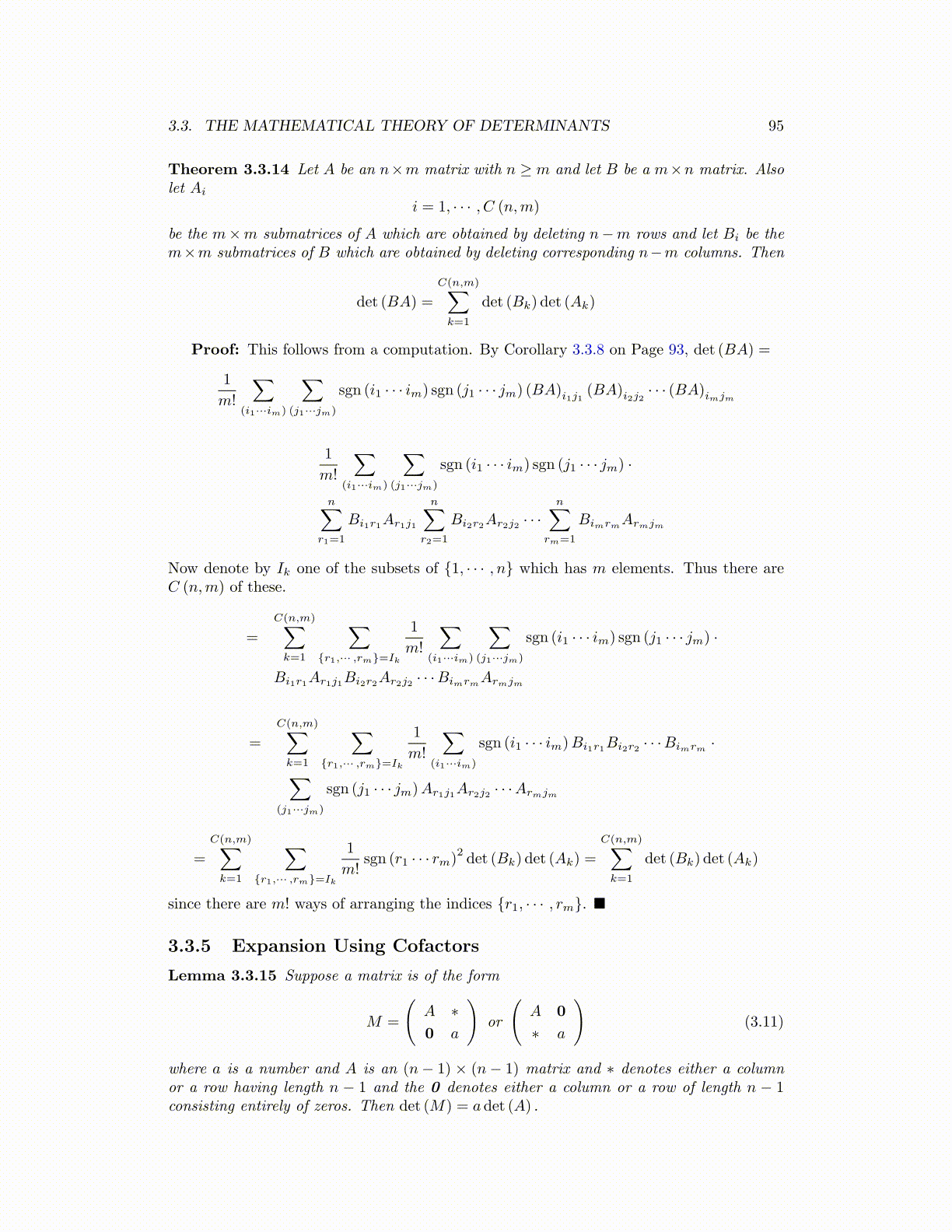
3.3. THE MATHEMATICAL THEORY OF DETERMINANTS 95
Theorem 3.3.14 Let A be an n×m matrix with n ≥ m and let B be a m×n matrix. Alsolet Ai
i = 1, · · · , C (n,m)
be the m×m submatrices of A which are obtained by deleting n−m rows and let Bi be them×m submatrices of B which are obtained by deleting corresponding n−m columns. Then
det (BA) =
C(n,m)∑k=1
det (Bk) det (Ak)
Proof: This follows from a computation. By Corollary 3.3.8 on Page 93, det (BA) =
1
m!
∑(i1···im)
∑(j1···jm)
sgn (i1 · · · im) sgn (j1 · · · jm) (BA)i1j1 (BA)i2j2 · · · (BA)imjm
1
m!
∑(i1···im)
∑(j1···jm)
sgn (i1 · · · im) sgn (j1 · · · jm) ·
n∑r1=1
Bi1r1Ar1j1
n∑r2=1
Bi2r2Ar2j2 · · ·n∑
rm=1
BimrmArmjm
Now denote by Ik one of the subsets of {1, · · · , n} which has m elements. Thus there areC (n,m) of these.
=
C(n,m)∑k=1
∑{r1,··· ,rm}=Ik
1
m!
∑(i1···im)
∑(j1···jm)
sgn (i1 · · · im) sgn (j1 · · · jm) ·
Bi1r1Ar1j1Bi2r2Ar2j2 · · ·BimrmArmjm
=
C(n,m)∑k=1
∑{r1,··· ,rm}=Ik
1
m!
∑(i1···im)
sgn (i1 · · · im)Bi1r1Bi2r2 · · ·Bimrm ·
∑(j1···jm)
sgn (j1 · · · jm)Ar1j1Ar2j2 · · ·Armjm
=
C(n,m)∑k=1
∑{r1,··· ,rm}=Ik
1
m!sgn (r1 · · · rm)
2det (Bk) det (Ak) =
C(n,m)∑k=1
det (Bk) det (Ak)
since there are m! ways of arranging the indices {r1, · · · , rm}. ■
3.3.5 Expansion Using Cofactors
Lemma 3.3.15 Suppose a matrix is of the form
M =
(A ∗0 a
)or
(A 0
∗ a
)(3.11)
where a is a number and A is an (n− 1) × (n− 1) matrix and ∗ denotes either a columnor a row having length n − 1 and the 0 denotes either a column or a row of length n − 1consisting entirely of zeros. Then det (M) = adet (A) .